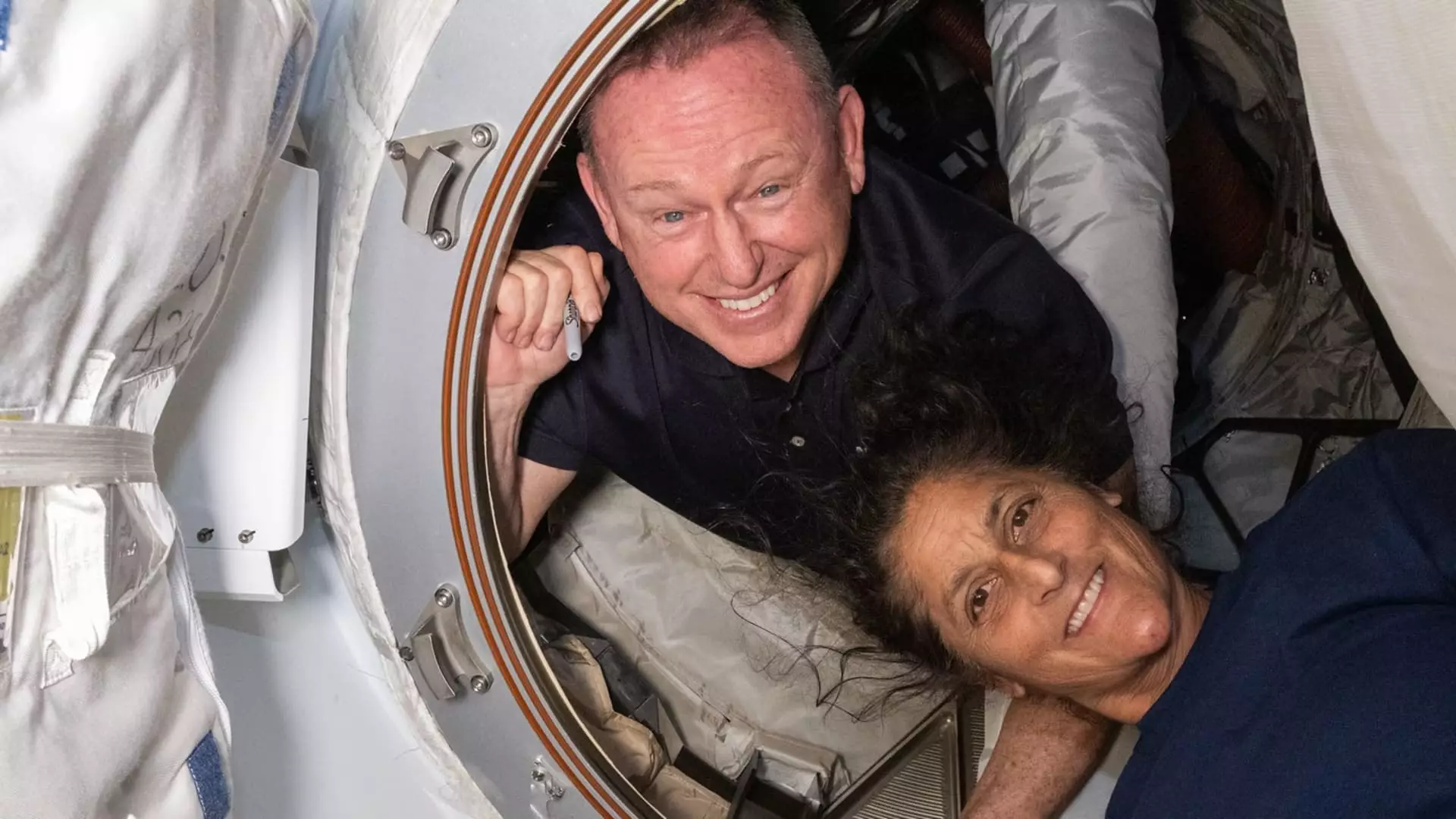For all its awe-inspiring beauty and technological marvels, space travel is a realm where chaos lurks just beneath the surface of every calculated mission. The saga of NASA astronauts Butch Wilmore and Suni Williams, who recently navigated a prolonged stay at the International Space Station (ISS) due to Boeing’s bungled Starliner mission, is a testament to both the unpredictability of aerospace endeavors and the human spirit’s resilience. What began as a nine-day test flight morphed into a complex challenge that lasted an astounding nine months, illuminating not just technical failures but also the emotional turbulence stirred by modern space politics.
Boeing’s Bumpy Path to Redemption
Boeing was given a monumental task: to provide an alternative transport to the ISS that could confidently rival SpaceX’s Dragon missions. Unfortunately, the Starliner’s ill-fated launch revealed serious deficiencies, contributing to an embarrassing setback for a company that has long stood as a pillar of American aerospace. The defective thrusters and subsequent “uncrewed” return highlighted the risks of spaceflight and raised serious questions about Boeing’s capacity to undertake future manned missions. With over $2 billion lost, one cannot help but wonder if the corporation is indeed capable of rectifying its trajectory—or if it will remain a cautionary tale in the annals of space exploration.
Media and Political Intrigue
The political terrain surrounding space travel has become increasingly contentious, especially as space technology gets entangled with personalities and political agendas. Former President Donald Trump’s and Elon Musk’s involvement in the narrative sparked rumors that painted Wilmore and Williams as “stranded” astronauts, fostering a dialogue colored more by propaganda than fact. Presidential remarks that lacked substantiation served only to escalate tensions and societal divide—an unsettling reminder that even the space program is not immune to political theatrics.
Additionally, while these astronauts were performing vital research and experiments, narratives focused more on their supposed victimization, overshadowing their accomplishments and contributions to science. This highlights a worrying trend where political narratives often drown out factual accomplishments and diminish human effort, transforming heroes into pawns on a larger chessboard.
Tethered Yet Hopeful
Amid the complexities of bureaucracy and technological failures, the essence of the astronauts’ experiences gets lost. Williams and Wilmore, both veteran test pilots, have embodied the courage and professionalism that define what it means to serve in space. Their commitment to conducting scientific experiments and maintaining the ISS underscores a level of dedication often overlooked by the media frenzy. Williams’ spacewalk and their joint contributions reveal that their time aboard the space station was actually far from aimless; they remained laser-focused on their duties even in the face of external chaos.
The emotional weight of returning home after such an unexpected extension cannot be understated. Williams conveying their sense of not feeling “abandoned” crystallizes a profound truth of human resilience. Yet, her yearning for family also resonates with many—reminding us that humanity’s connection extends beyond orbit. In a world racked with distractions, their simple longing to return home illustrates a core tenet of human existence: connection and belonging.
What Lies Ahead: A Fragile Future
As NASA looks to solidify partnerships with both Boeing and SpaceX for future ISS missions, the path is anything but smooth. The need to foster competition that can drive innovation must be balanced with accountability and reliability—a tightrope act that could define the next era of American space exploration. The decision to prioritize ship quality over political timing speaks volumes about NASA’s commitment to safety, albeit at the expense of wielding political pressure.
What’s next for Boeing, aimed at reclaiming its reputation? Or will it fall prey to budget cuts and reputational damage? As Wilmore and Williams prepare for their awaited homecoming, the broader implications of their extended journey remain a reminder of the tangled threads that connect human ambition, corporate competition, and governmental oversight. The path forward requires more than just advancements in technology; it demands clarity, accountability, and perhaps, a more nuanced understanding of the intertwined worlds of science and politics.

